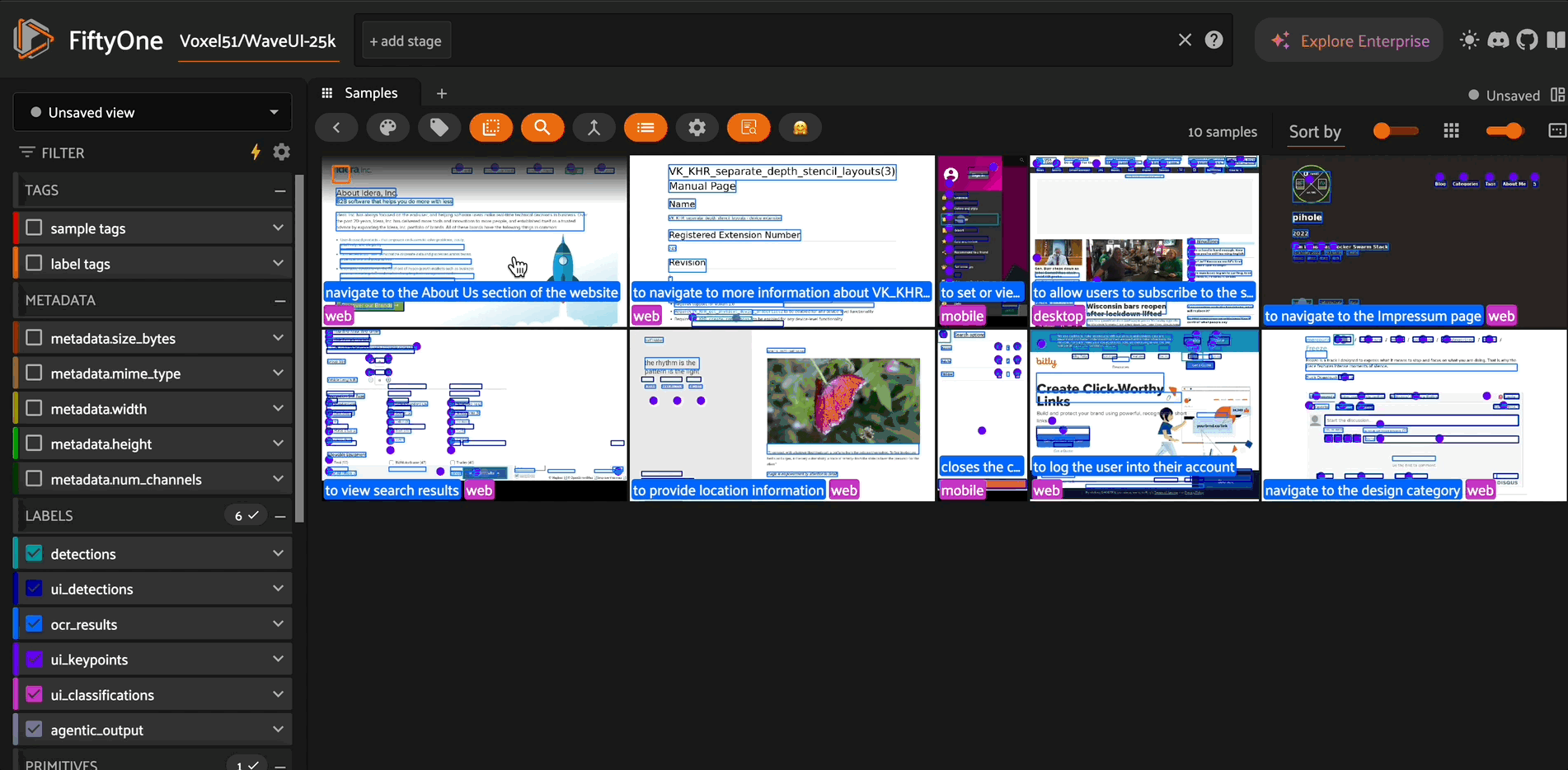Note
This is a community plugin, an external project maintained by its respective author. Community plugins are not part of FiftyOne core and may change independently. Please review each plugin’s documentation and license before use.
MiMo-VL + FiftyOne Integration#
A FiftyOne Zoo integration for Xiaomi’s MiMo-VL Vision-Language Models, providing state-of-the-art multimodal capabilities for computer vision tasks.

Overview#
This repository implements MiMo-VL models as remote zoo models for FiftyOne, enabling easy access to powerful vision-language capabilities. MiMo-VL-7B achieves exceptional performance across visual understanding, reasoning, and GUI interaction tasks, outperforming many larger models on standard benchmarks.
Available Models#
MiMo-VL-7B-RL: Advanced model trained with Mixed On-policy Reinforcement Learning (MORL), outperforming Qwen2.5-VL-7B on 35 out of 40 evaluated tasks
MiMo-VL-7B-SFT: Base model with strong reasoning capabilities after extensive 4-stage pre-training
MiMo-VL-7B-SFT-GGUF: Quantized version for more efficient deployment
Model Architecture#
MiMo-VL-7B comprises three key components:
A native-resolution Vision Transformer (ViT) encoder that preserves fine-grained visual details
An MLP projector for efficient cross-modal alignment
The MiMo-7B language model specifically optimized for complex reasoning tasks
The model was trained through:
Four-stage pre-training (2.4 trillion tokens) including projector warmup, vision-language alignment, general multimodal pre-training, and long-context SFT
Mixed On-policy Reinforcement Learning (MORL) integrating diverse reward signals spanning perception accuracy, visual grounding, reasoning, and human preferences
Key Capabilities#
This integration supports multiple vision-language operations:
Visual Question Answering: Answer complex questions about image content
Object Detection: Precisely locate objects with bounding boxes
OCR: Detect and extract text with spatial awareness
Keypoint Detection: Identify points of interest in images
Classification: Categorize image content with detailed labels
Agentic Interaction: Generate actions for navigating graphical user interfaces
Getting Started#
Installation#
# Register the remote zoo model source
import fiftyone.zoo as foz
foz.register_zoo_model_source("https://github.com/harpreetsahota204/MiMo_VL")
# Load the model
model = foz.load_zoo_model("XiaomiMiMo/MiMo-VL-7B-RL")
Available Checkpoints#
The integration supports multiple checkpoints with different capabilities:
# Load the RL-optimized model (best overall performance)
model = foz.load_zoo_model("XiaomiMiMo/MiMo-VL-7B-RL")
# Load the SFT model (strong baseline with lower resource requirements)
model = foz.load_zoo_model("XiaomiMiMo/MiMo-VL-7B-SFT")
# Load the GGUF quantized model (optimized for deployment efficiency)
model = foz.load_zoo_model("XiaomiMiMo/MiMo-VL-7B-SFT-GGUF")
Usage Examples#
import fiftyone as fo
import fiftyone.zoo as foz
# Load a dataset
dataset = fo.Dataset.from_dir(...)
# Load the MiMo-VL model
model = foz.load_zoo_model(
"XiaomiMiMo/MiMo-VL-7B-RL",
# install_requirements=True, #you can pass this to make sure you have all reqs installed
)
# Visual Question Answering
model.operation = "vqa"
model.prompt = "Describe what's happening in this image"
dataset.apply_model(model, label_field="vqa_results")
# Object Detection
model.operation = "detect"
model.prompt = "Locate all interactive elements in this UI"
dataset.apply_model(model, label_field="ui_detections")
# OCR
model.operation = "ocr"
model.prompt = "Extract all text from this document"
dataset.apply_model(model, label_field="text_detections")
# Keypoint Detection
model.operation = "point"
model.prompt = "Point to all clickable elements"
dataset.apply_model(model, label_field="ui_keypoints")
# Classification
model.operation = "classify"
model.prompt = "What type of interface is this?"
dataset.apply_model(model, label_field="ui_classifications")
# Using existing fields from the dataset as prompts
# If your dataset already has fields with prompts or instructions
model.operation = "vqa"
dataset.apply_model(model, prompt_field="questions", label_field="answers")
# Agentic UI Interaction using prompts from dataset field
model.operation = "agentic"
dataset.apply_model(model, prompt_field="purpose", label_field="ui_actions")
Using Dataset Fields as Prompts#
When your dataset already contains fields with questions, instructions, or task descriptions, you can use these directly:
# Assume your dataset has a field called "user_query" with questions about images
model.operation = "vqa"
dataset.apply_model(model, prompt_field="user_query", label_field="model_response")
# Process a collection of detection tasks stored in the "detection_tasks" field
model.operation = "detect"
dataset.apply_model(model, prompt_field="detection_tasks", label_field="detected_objects")
# Run OCR using instructions from an "ocr_instructions" field
model.operation = "ocr"
dataset.apply_model(model, prompt_field="ocr_instructions", label_field="extracted_text")
This approach is particularly useful when:
Processing batch queries with different prompts for each image
Running evaluations with standardized prompts stored in the dataset
Implementing multi-step workflows where each stage has specific instructions
System Prompts#
The integration provides optimized system prompts for each operation type:
Detection: Specialized in detecting and localizing visual elements with bounding boxes
Keypoint Detection: Identifies the center points of meaningful visual elements
Classification: Provides comprehensive classification across visual domains
OCR: Detects, reads and localizes text from any visual content
VQA: Answers questions about images with clear, concise responses
Agentic: Interacts with GUIs by analyzing interfaces and generating appropriate actions
Requirements#
Transformers
Huggingface Hub
qwen-vl-utils
accelerate
License#
This integration is licensed under the Apache 2.0 License. The MiMo-VL models are licensed under the MIT License.
Citation#
@misc{coreteam2025mimovltechnicalreport,
title={MiMo-VL Technical Report},
author={LLM-Core-Team Xiaomi},
year={2025},
eprint={2506.03569},
archivePrefix={arXiv},
primaryClass={cs.CL},
url={https://arxiv.org/abs/2506.03569},
}
